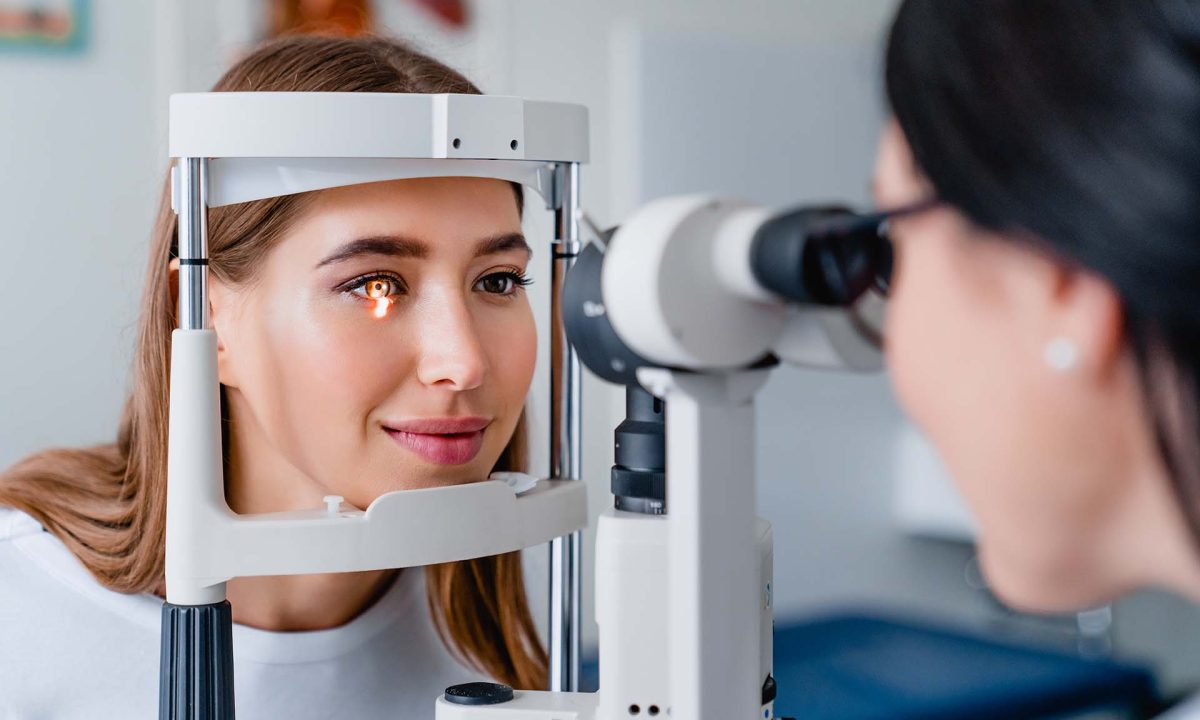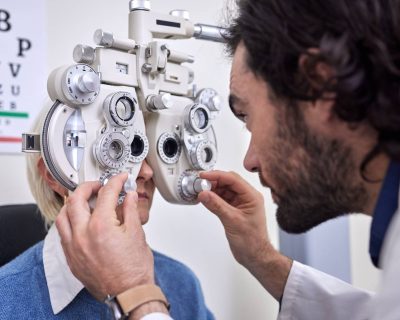
What Health Problems Can An Eye Test Detect?
Regular eye exams look at much more than how well you can read a chart in front of you or how well you can make out a picture in the distance. During a complete eye exam, various tests allow your optometrist to assess the condition of your eyes as well as your general health. This allows for the detection and treatment of a wide range of significant health conditions, including diabetes, stroke, and numerous cancers.
Here are the following health problems that an eye test can detect:
Diabetes
Diabetes is a condition that now affects roughly 9% of all Canadians. Unfortunately, many of those who have diabetes are unaware of it, which can lead to a variety of complications. Diabetes may be detected simply by looking at your eyes during a thorough eye test. Diabetes is frequently associated with diabetic retinopathy, an eye disorder that causes damage to the blood vessels in the retina. Many patients learn they have diabetes through an eye exam rather than a physical checkup given by their health care physician. If your optometrist feels you are showing indications of diabetic retinopathy during an eye exam, it is important to consult with your primary care physician as soon as possible.
High blood pressure
High blood pressure is a common condition that affects one in four adults in Canada. If left untreated, it can lead to heart attacks, strokes, and other complications. An Optometrist may be able to tell you whether you have high blood pressure while checking your eyes. Which frequently causes issues with the blood vessels in the back of your eye. If you have high blood pressure, it is vital to get it under control since it can cause a variety of serious conditions along with eye issues. High blood pressure can cause glaucoma which is a group of eye diseases that can lead to vision loss and in severe cases blindness
Arthritis
With a visit to the optometrist and an accompanied eye test, they can easily see if you have dry eyes, which can be an indication of another condition. A quarter of people with rheumatoid arthritis experience dry eyes. It is common for the infection to develop in dry eyes. As a result, the severity of one’s dry eyes can range from inconvenient to critical. Iritis, or inflammation of the iris, the colored component of the eye, is another telltale indication of rheumatoid arthritis. If a person experiences two of these flare-ups in a year or three in 18 months, it is a strong indicator of rheumatoid arthritis. If you have an inflammatory form of arthritis, you may experience eye discomfort, light sensitivity, diminished or impaired vision, or even glaucoma and/or cataracts.
Multiple sclerosis
Multiple sclerosis is an autoimmune disease that affects the central nervous system, which includes the brain, spinal cord, and optic nerves. As the disease progresses, your optic nerves expand and cause your vision to blur, a condition known as optic neuritis. Although optic neuritis may not necessarily result in a diagnosis of multiple sclerosis, the two are frequently associated. Optic neuritis affects around 75% of people with multiple sclerosis, and it is frequently the first symptom to appear during the early stages of the disease. If an optometrist detects multiple sclerosis symptoms during an eye test, proactive efforts for diagnosis and therapy can be done to ensure the best form of recovery and that the condition does not worsen.
Stroke
The condition of your retinas can alert your optometrist to a variety of health concerns, including the risk of stroke. Tiny clots or damage in the retinal blood vessels are warning signals of stroke risk. These are often caused by excessive blood pressure and alert your optometrist that preventive measures are required. If these warning signals are visible during your eye test, your optometrist may request additional tests to offer more information about your specific situation and choose the best course of treatment.
High Cholesterol
A complete eye test with an optometrist may reveal more than excessive blood pressure but also indicate high cholesterol. Those who have high cholesterol may develop a blue or yellow ring around their cornea. There may also be deposits left behind in a person’s retinal blood vessels that suggest higher cholesterol levels. In rare cases, an optometrist may be able to detect if a person is about to have a stroke due to excessive cholesterol just by looking at their eyes.
Cancer
Unrelated to where the cancer is located, your eyes are generally one of the first areas to exhibit symptoms of potential issues. A routine eye test can detect everything from skin cancer to blood cancer. Hemorrhaging within the retinas can suggest leukemia, and a change in eye color can indicate ocular melanoma. A routine eye test with an optometrist can do more than just monitor the health of your eyes but can be an area where symptoms of other health conditions can be discovered. The skin around your eyes can be inspected during an eye test for dark spots, new freckles, and other alarming indicators. In the case that anything abnormal is found in or around your eyes, you can expect to be referred to a specialist.
Vitamin A deficiency
Along with the other mentioned conditions, dry eyes and night blindness can both be signs of Vitamin A deficiency. This results in your eyes not being able to create enough moisture to keep themselves adequately moisturized. Low Vitamin A levels can also cause night blindness by limiting the production of particular pigments required for your retina to function correctly. Vitamin A deficiency is the greatest avoidable cause of blindness in children globally. Hence why it is vital for routine eye tests with your optometrist.
From the conditions described it is important to schedule a regular eye exam. However, it is vital to note that these symptoms do not directly imply that you have a specific health problem. When an eye test shows a potential health condition, your optometrist will advise you to seek additional testing from a specialist or your primary care provider.




